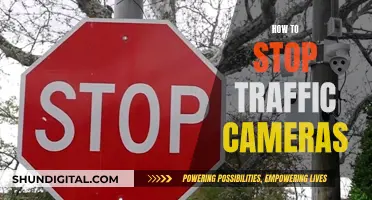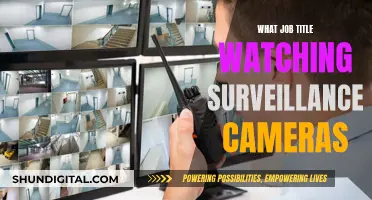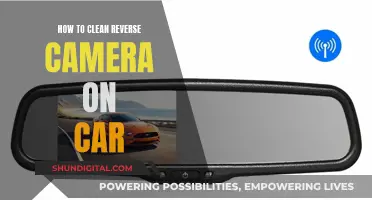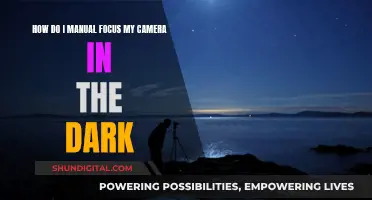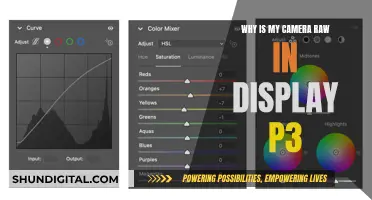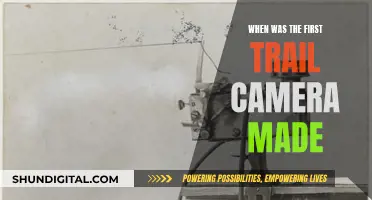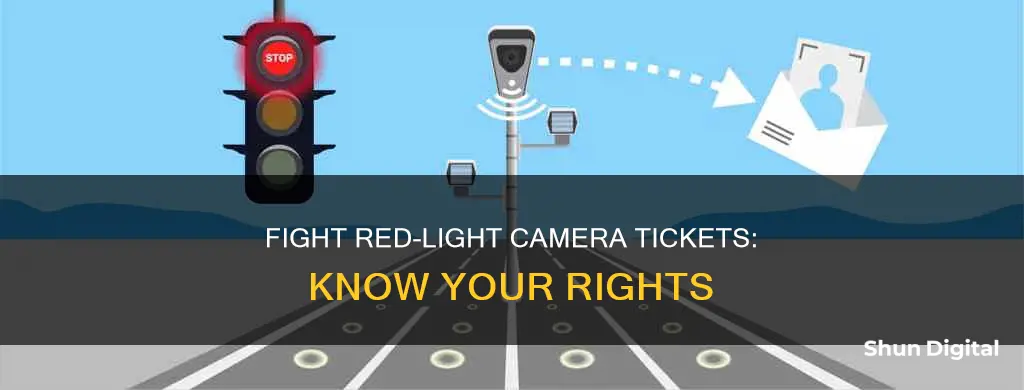
Receiving a red light camera ticket can be frustrating and bewildering, but it's important to know that you have options to contest it. Red light camera tickets are typically issued when a vehicle is detected running a red light at an intersection equipped with automated cameras and sensors. The registered owner of the vehicle receives the ticket, which usually includes details of the violation, images captured, and a fine that needs to be paid. While the procedures and penalties may vary by location, there are some common strategies that can be used to fight a red light camera ticket. These include verifying the evidence, such as checking the clarity of photos and videos; investigating technical requirements like proper signage; confirming your identity and whether you were the one driving; understanding the timing of the lights; examining calibration and maintenance records; and seeking legal assistance. It's essential to act promptly, as ignoring a red light camera ticket can lead to increased fines and other consequences.
| Characteristics | Values |
|---|---|
| Ticket Issuance | Triggered by vehicle passing over a sensor at an intersection with an automated camera system |
| Ticket Recipient | Registered owner of the vehicle |
| Evidence | Photos, videos, and date, time, and location details |
| Defenses | Not driving the vehicle, unclear/inaccurate evidence, absence of required signage, etc. |
| Penalties | Fines ranging from $75 to $400, demerit points, license suspension, and increased insurance rates |
| Contest Options | Submitting an affidavit, contesting the violation, appealing administrative decisions, early resolution meetings |
What You'll Learn

Verify the evidence
Verifying the evidence is a crucial step in contesting a red-light camera ticket. Here are some detailed instructions to guide you through this process:
Review the Ticket and Evidence:
Carefully examine the ticket and all associated evidence, including photographs, videos, and vehicle information. Check for any discrepancies or errors in the date, time, location, and alleged violation. Note that red-light camera tickets are typically mailed to the registered owner of the vehicle, so if you were not the driver, you may need to identify the actual driver as part of your defence.
Verify the Photographic Evidence:
Scrutinize the photos and videos provided as evidence. Check if the images are clear and accurately capture the vehicle, license plate, and driver. Blurred or unclear images that do not clearly identify these elements can be strong grounds for dismissal. Even minor discrepancies or inconsistencies can make a significant difference in your case.
Understand the Technical Requirements:
Research the specific laws and regulations related to red-light cameras in your area. Some jurisdictions require specific signage to inform drivers about the presence of red-light cameras. If the required signs are missing, improperly placed, or do not meet the legal standards, you may have a valid defence. Understanding the technical requirements will help you identify any violations or non-compliance issues.
Gather Supporting Evidence:
Build a strong case by gathering additional evidence to support your claim. This may include photographs, videos, eyewitness statements, technical reports, or any relevant documentation. For example, if you believe the yellow light duration was too short, collect data and evidence to support this claim. Consult with a legal professional experienced in traffic law to determine the most effective evidence for your defence.
Examine Calibration and Maintenance Records:
Obtain and review the calibration and maintenance records of the red-light camera in question. Verify that the camera equipment meets the required standards and that it was properly calibrated and maintained. Any issues or discrepancies in the camera's maintenance or calibration records can be used as evidence to challenge the validity of the ticket.
Remember, verifying the evidence is a critical step in building a solid defence for contesting a red-light camera ticket. Take your time to thoroughly examine all the available information and seek legal guidance if needed to ensure you have a well-prepared and robust case.
Understanding Raw Camera Mode: Unlocking Photography Potential
You may want to see also

Check for required signage
When contesting a red-light camera ticket, one of the key things to check is whether the required signage was posted. Red light cameras are typically placed in high-traffic areas where violations or collisions are common, and in many jurisdictions, signs are meant to be posted at all intersections equipped with these cameras. These signs are intended to notify drivers of the presence of red light cameras.
The laws regarding these signs vary depending on the state. Some states require signs that explicitly inform drivers that red light cameras are in use at an intersection. These requirements may specify what the signs must say and where they must be located in relation to the intersection. For example, Florida law requires specific signage to inform drivers about red light cameras, and if these signs are missing, improperly placed, or do not meet legal standards, it may be grounds for a defence.
When contesting a ticket, it is important to research the local regulations in your area to understand the exact signage requirements. By checking for the required signage and understanding the specific laws in your state, you can build a stronger case for contesting your ticket.
In addition to checking for signage, there are other strategies you can employ to contest a red-light camera ticket. For instance, you can verify the evidence by carefully examining the photos and videos provided for clarity and accuracy. If the images are blurred or do not clearly identify the driver or license plate, this could be grounds for dismissal.
Revitalizing Lithium-Ion Camera Batteries: Pro Tips for Photographers
You may want to see also

Confirm your identity
Confirming your identity is a crucial step in contesting a red-light camera ticket, especially if you were not the one driving the vehicle when the violation occurred. Here are some detailed instructions on how to confirm your identity effectively:
- Obtain an Affidavit: In many states, including Florida, you can obtain an affidavit, which is a sworn statement declaring that you were not the driver of the vehicle at the time of the violation. This affidavit can be strong evidence to support your claim.
- Provide Proper Documentation: Along with the affidavit, gather any relevant documentation or evidence that supports your claim. This could include documents that prove your whereabouts at the time of the violation or any other information that helps establish your identity.
- Submit the Affidavit and Documentation: Submit the affidavit and supporting documentation to the relevant authority handling your case. This could be the traffic court or the law enforcement agency that issued the ticket. Ensure you keep copies of all the documents for your records.
- Provide Additional Evidence: If possible, try to gather additional evidence that confirms your identity and disproves the violation. For example, you can review the photographs and videos provided with the ticket to verify if the driver's identity is clear or if there are any discrepancies.
- Consult an Attorney: Consider consulting a skilled attorney, especially one specializing in red-light camera cases. They can guide you through the legal process, review your evidence, and help strengthen your claim. They may also be able to identify specific defences applicable to your jurisdiction.
- Understand Local Regulations: Research and understand the local regulations regarding red-light camera tickets. Some states may have specific requirements for signage informing drivers about red-light cameras. If these requirements are not met, it could be a viable defence for your case.
Remember, each jurisdiction may have unique processes and requirements for contesting a red-light camera ticket. Always review the specific laws and regulations in your area to ensure you are following the correct procedures for confirming your identity and contesting the ticket.
Troubleshooting a Wyze Camera That Won't Charge
You may want to see also

Understand light timing
Understanding the timing of the lights is crucial when contesting a red-light camera ticket. Here are some strategies to consider:
Verify the Timing Requirements
California law mandates a minimum duration for yellow lights before they turn red. If you recall the yellow light being unusually brief, return to the intersection to time it with a stopwatch. Compare your measurements to the required minimum time outlined in the California Manual on Uniform Traffic Control Devices, downloadable from https://dot.ca.gov/programs/safety-programs/camutcd. If the yellow light duration is shorter than the mandated minimum, this can be a strong defence against your ticket.
Study Relevant Traffic Laws
Familiarise yourself with applicable traffic laws. For instance, if you had already entered the intersection when the light turned yellow, you did not violate the law. Understanding these laws will help you identify potential discrepancies and build your case.
Assess the Intersection's Design
Examine the design and signage of the intersection. Ensure that warning signs are posted within 200 feet of the intersection, clearly visible to oncoming traffic, and stating the use of an automatic enforcement system. If these signs are missing, improperly placed, or do not meet legal standards, you may have grounds for a valid defence.
Review Camera Calibration and Maintenance Records
Request calibration and maintenance records for the red light camera in question. California law requires automatic enforcement systems to undergo regular calibration and inspection. If the camera was not properly calibrated or inspected, or if it failed calibration around the time of the incident, this information could be used to challenge the validity of your ticket.
Check Your Camera Ticket Status: A Quick Guide
You may want to see also

Examine camera records
Examining camera records is a crucial step in contesting a red-light camera ticket. Here are some detailed instructions to guide you through this process:
Understanding the Camera Records:
Firstly, you need to understand what the camera records entail. When a vehicle is detected running a red light at an intersection with automated cameras, the cameras are triggered to capture images of the vehicle's license plate, and sometimes, the driver as well. These images serve as evidence of the violation. In some cases, video footage of the incident may also be available.
Obtaining the Camera Records:
You have the right to request and review the camera records associated with your ticket. The process for obtaining these records may vary depending on your location, but typically, you can make a formal request to the relevant authorities or the agency that issued the ticket. This could be the local police department or the highway patrol. They will provide you with access to the photos, and possibly, a link to view any available video footage.
Analyzing the Camera Records:
Once you have obtained the camera records, carefully scrutinize them for any discrepancies or errors. Here are some key aspects to consider:
- Clarity of the Images: Blurred or unclear photographs may not provide sufficient evidence to support the violation. If the images do not clearly show the license plate or the driver, it could be grounds for dismissal.
- Identification of the Vehicle: Check if the license plate in the images matches the one on your vehicle. If there is a mismatch, it can be used as evidence for dismissal.
- Timing of the Light Transition: Analyze the timing of the yellow-to-red light transition. If the duration of the yellow light is minimal, you may argue that there was insufficient time to bring your vehicle to a safe stop at that particular intersection.
- Calibration and Maintenance Records: Request the calibration and maintenance records of the red light camera. Inconsistencies or malfunctions in these records could challenge the validity of the ticket.
Building Your Case:
After examining the camera records, you can start building your defence. If you find any discrepancies or errors, document them thoroughly. Take detailed notes, gather supporting evidence, and consider seeking expert advice if needed. You may also want to research the specific laws and regulations related to red light cameras in your area to identify any additional defences you can use. Remember, even minor discrepancies in the camera records can sometimes make a significant difference in contesting the ticket.
Maximizing Camera Battery Life: Tips and Tricks
You may want to see also
Frequently asked questions
Yes, you typically have 15 to 60 days to respond to the ticket, either by paying it or disputing it. If you don't respond within this time frame, the ticket will be deemed undisputed, and you will be found guilty of the offence.
The penalties for a red-light camera ticket vary depending on the location. In some states, the penalties are the same as for any other red-light violation, including fines ranging from $75 to $400 and demerit points on your driver's license. In other states, the penalties are less severe, with lower fines and no demerit points. Additionally, red-light camera tickets typically do not affect your insurance rates or driving record.
There are several grounds for disputing a red-light camera ticket, including: unclear or inaccurate photo or video evidence; incorrect identification of the driver; improper signage or calibration of the camera; and extenuating circumstances such as an emergency vehicle approaching or a funeral procession.
The process for disputing a red-light camera ticket may vary depending on your location. In some cases, you may need to submit an affidavit or request a hearing to present your evidence and argue your case. It is recommended to review the specific laws and procedures in your state or city and consider consulting a traffic citation attorney for guidance.


